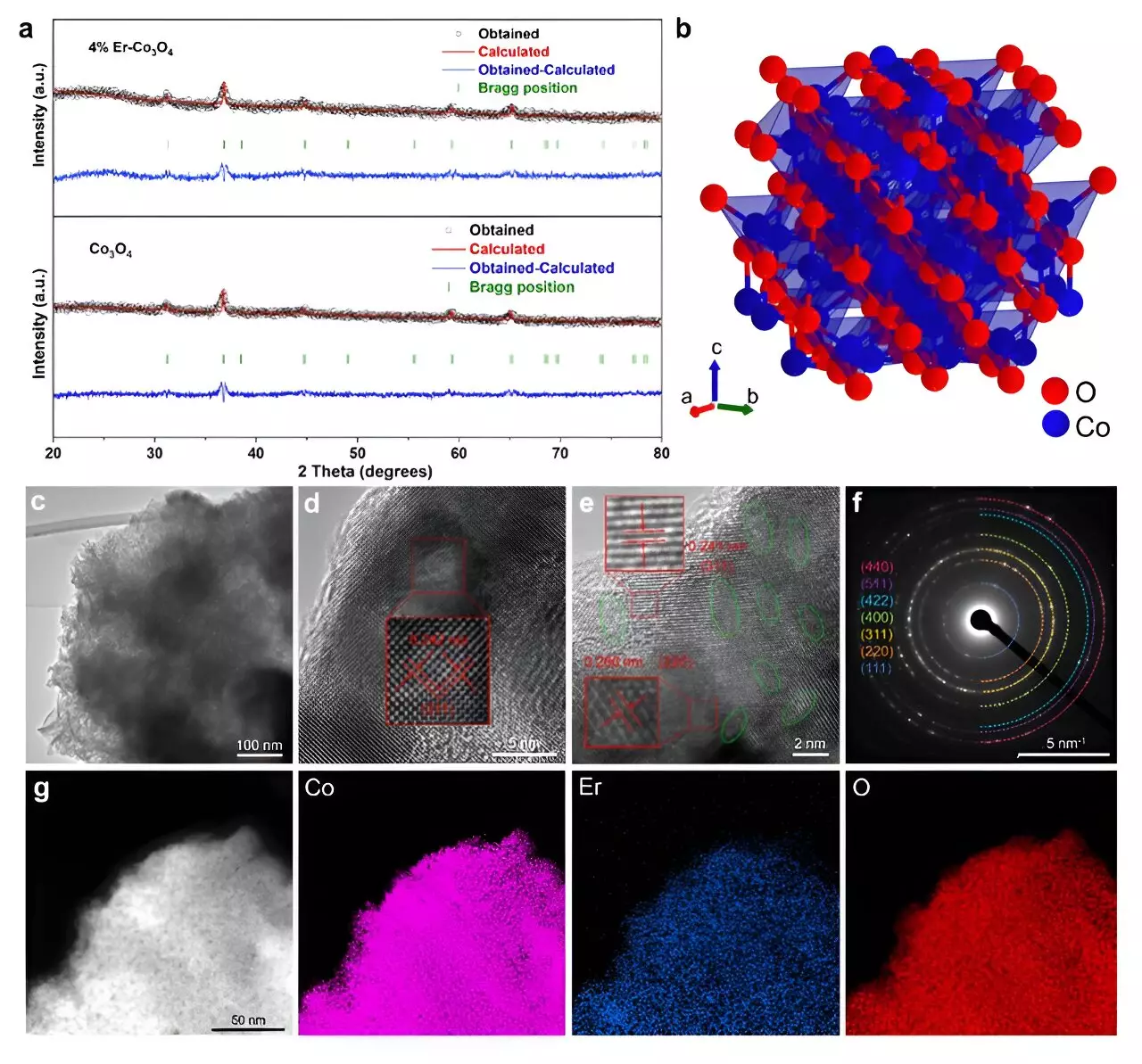Recent advancements in electrocatalysis have opened up exciting avenues for energy conversion technologies. A multidisciplinary team of researchers has made remarkable strides in enhancing the efficiency and stability of oxygen evolution reactions (OER) by introducing erbium (Er), a rare earth element, into cobalt oxide (Co3O4) catalysts. This innovation is not only cost-effective but also rivals the performance of conventional noble metal-based catalysts, showcasing a promising alternative in the field of green energy technology.
The oxygen evolution reaction plays a pivotal role in water splitting, a fundamental process for generating hydrogen fuel and other energy conversion applications. Efficient catalysts are crucial to facilitate this reaction, particularly in acidic environments where traditional catalysts often fall short. Historically, cobalt oxide has stood out for its reasonable stability and catalytic activity. However, the natural limitations imposed by the spinel crystal structure of cobalt oxides have hindered their optimal efficiency. The recent work of the research team represents a significant advancement, ushering in a new era of more robust and efficient catalytic alternatives.
The crux of the team’s findings lies in the strategic doping of cobalt oxide with erbium. According to Tianyi Wang, a researcher at Tohoku University’s Advanced Institute for Materials Research, the introduction of just 4% erbium led to the Co3O4 catalyst achieving an exceptional overpotential of only 321 mV at a current density of 10 mA cm². This performance places it on par with, and in certain metrics even superior to, iridium-based catalysts that are generally regarded as benchmarks in the sector. Such impressive results suggest that modest modification can yield transformative enhancements in catalyst performance.
To demystify the high efficiency of the doped catalyst, the research incorporated sophisticated methodologies, including microkinetic modeling and density functional theory (DFT) calculations. The integration of erbium led to the formation of additional active sites and defects within the crystal lattice of Co3O4. This alteration resulted in an increased Co3+/Co2+ ion ratio, facilitating the development of oxygen vacancies—integral features that significantly accelerate the OER process. Furthermore, the oxygen vacancies created by doping effectively enhanced the interactions with critical intermediates required for the reaction, paving the way for improved reaction kinetics.
Hao Li, another key researcher in this study, employs a relatable analogy to explain the boost in catalytic activity. He likens the doped catalyst to a road with additional lanes: the er doping increases the available pathways for oxygen intermediates. This means more intermediates can traverse the reaction pathway with ease, consequently speeding up the overall reaction. This thoughtful analogy encapsulates the essence of what doped cobalt oxide can achieve, bridging complex scientific concepts with understandable visualizations.
This groundbreaking research underscores the significance of non-precious metal doping strategies in the quest for efficient, sustainable, and cost-effective electrocatalysts. With the initial success of erbium-doped cobalt oxide, the research team expresses interest in investigating other non-precious metal elements for similar enhancements. Developing high-performance catalysts that are both affordable and abundant aligns well with the growing global demand for economical energy conversion solutions.
The strides made by this research team mark a noteworthy milestone in the field of electrocatalysis. By combining innovative doping methods with cobalt oxide, they have set a precedent for future research aimed at creating next-generation catalysts. As the world pivots toward more sustainable energy practices, such innovations are essential for overcoming existing challenges in energy generation and storage. The potential of this research promises not only to address current limitations but also to lay the groundwork for a more sustainable and economically viable future in renewable energy technologies.


Leave a Reply